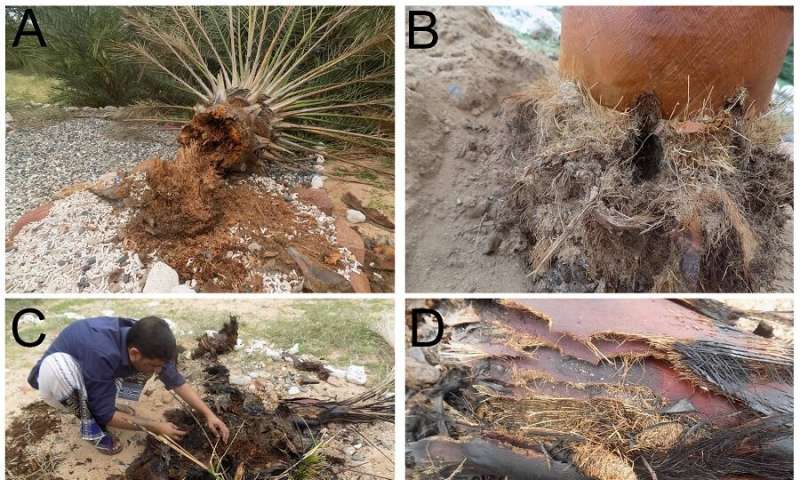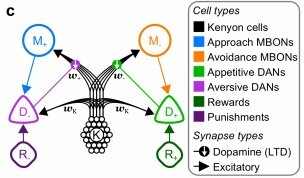#Presence of devastating pest confirmed on Socotra Island
“#Presence of devastating pest confirmed on Socotra Island”

CABI scientist Dr. Arne Witt has led an international team of researchers who have confirmed for the first time the presence of the date pest red palm weevil on Socotra Island, Yemen, putting the livelihoods of residents at risk.
The red palm weevil Rhynchophorus ferrugineus (Olivier) (Coleoptera: Curculionidae) has already proved its ability to devastate date crops around the world where in the Gulf Cooperation Council (GCC) countries, for example, annual losses associated with the removal of severely infested palms at 1 and 5% infestation levels have been estimated to range from $5.18 to $25.92 million.
Dr. Witt and scientists from Mendel University in the Czech Republic, Senckenberg Research Institute and Natural History Museum in Germany and the Environmental Protection Agency in Socotra, fear that the red palm weevil—now well established on the island (a UNESCO World Heritage site)—is ‘likely to have a significant negative impact on livelihoods as dates are the most important locally-produced food after milk and meat.’
The researchers, whose findings are outlined in a paper published in a Special Issue on Socotra in the journal Rendiconti Lincei, say more surveys are needed to determine the exact distribution of the palm pest on Socotra and what impact current invasions are having on date production.
However, their initial research and subsequent surveys confirm the presence of the pest in date palm plantations on the north-eastern coast, within 5km of the capital Hadiboh, as well as in at least 22 palm plantations on Socotra along the north coast, from west to east between Dihamd and Riy di Hamri, extending south in the Hadiboh Plain from Hadiboh to the mountain foothills towards the Qishn area. No infestations in the south (Noged area) and west (Qalansiyah area) of Socotra have been found.
They recommend that a specific strategy for the control of red palm weevil should be developed that may include cultural and sanitary methods, and the use of pheromone traps.
Dr. Witt believes that the red palm weevil was accidentally introduced within the last few years as a contaminant of goods, including cuttings and potted plants, imported from mainland Yemen. “The red palm weevil is considered to be one of the most problematic pests of date palm in the world. There is a risk that reduced income from palms will result in additional pressure from communities on available natural resources contributing to further biodiversity loss.”
“Poor management practices, such as the indiscriminate use of pesticides, will also impact negatively on endemic insects and other organisms.”
Dr. Witt outlines how the red palm weevil larvae bore into palm trees, and feed on the succulent plant material, especially in the main trunk or stem. Initial larval activity is very difficult to detect without specialized equipment. By the time the first symptoms are visible, it is most often too late, and so serious that any treatments are unlikely to be successful, resulting in the death of the affected plant.
Dr. Witt added, “Surveys of incoming vessels at the port at Hadiboh, and local markets, have revealed that a large number of goods, especially fruits, vegetables, plant parts, and potted plants are imported from Yemen on a regular basis.”
“However, we cannot exclude the possibility of the beetle being introduced from one of the other Arab States in the Persian Gulf that increasingly export goods, including live plants, to the island; date palm trees are known to be imported to Socotra frequently from other Gulf countries and this practice seems to have continued in recent years.”
“One of the most vital issues is the much-needed establishment of quarantine facilities and phytosanitary measures for the island and adherence to these measures by different countries that deliver goods. This information will assist in the development and implementation of a management strategy, and determine if eradication is a possible viable option.”
The scientists conclude that eradication of the beetle has been achieved on the Canary Islands, an indication of what can be done if management is well coordinated and it has the support of communities.
More information:
Arne Witt et al, First record of the red palm weevil Rhynchophorus ferrugineus (Olivier) on Socotra Island (Yemen), an exotic pest with high potential for adverse economic impacts, Rendiconti Lincei. Scienze Fisiche e Naturali (2020). DOI: 10.1007/s12210-020-00918-6
Provided by
CABI
Presence of devastating pest confirmed on Socotra Island (2020, June 11)
retrieved 11 June 2020
from https://phys.org/news/2020-06-presence-devastating-pest-socotra-island.html
This document is subject to copyright. Apart from any fair dealing for the purpose of private study or research, no
part may be reproduced without the written permission. The content is provided for information purposes only.
If you want to read more Like this articles, you can visit our Science category.
if you want to watch Movies or Tv Shows go to Dizi.BuradaBiliyorum.Com for forums sites go to Forum.BuradaBiliyorum.Com



